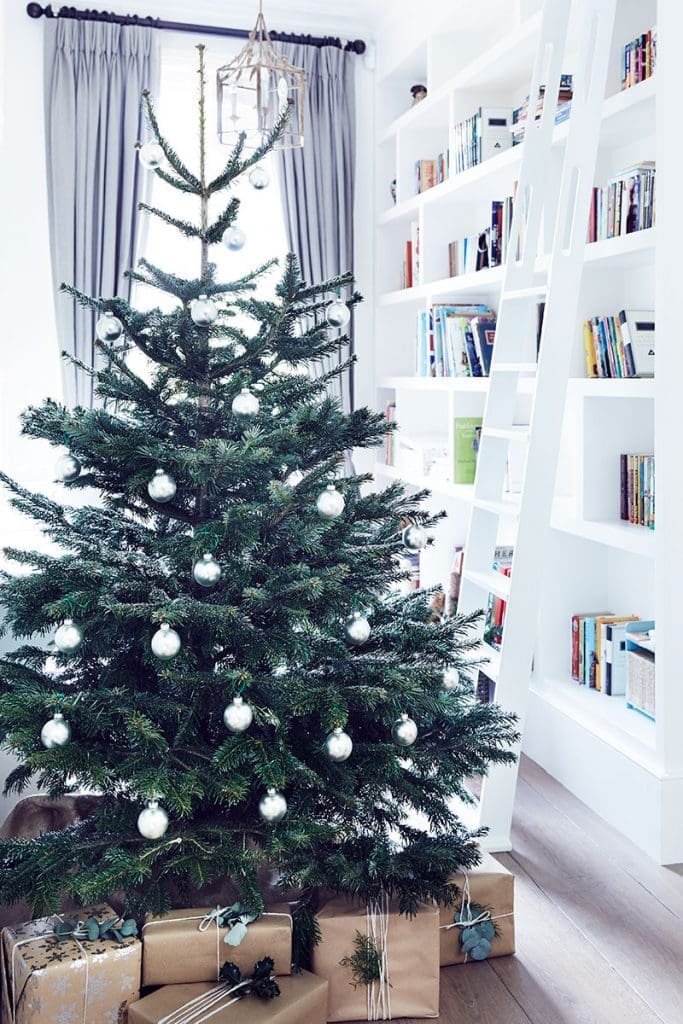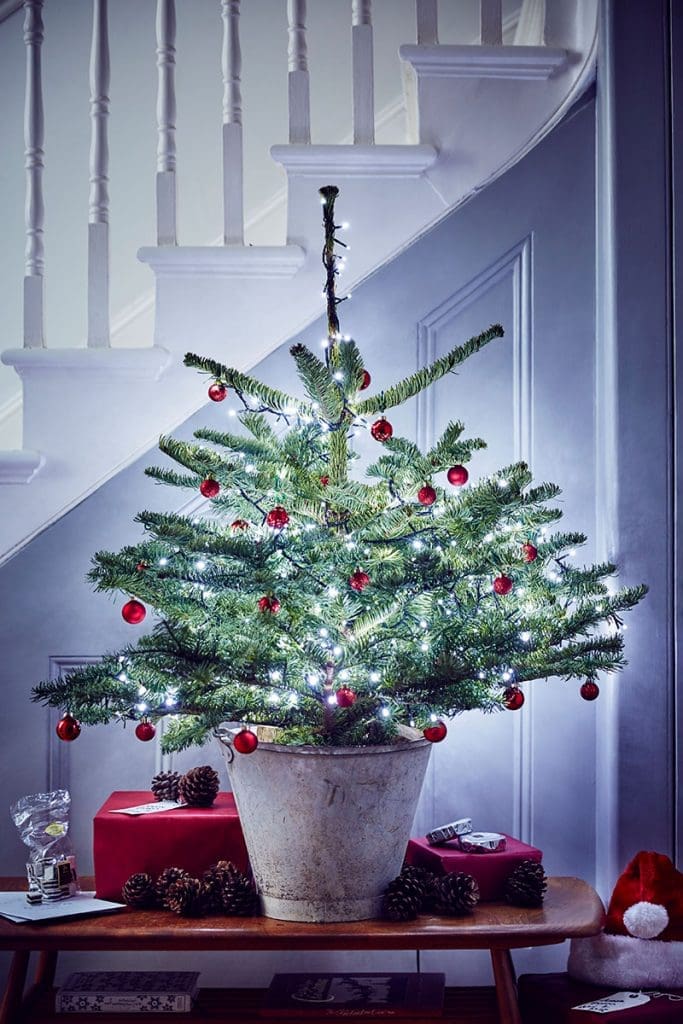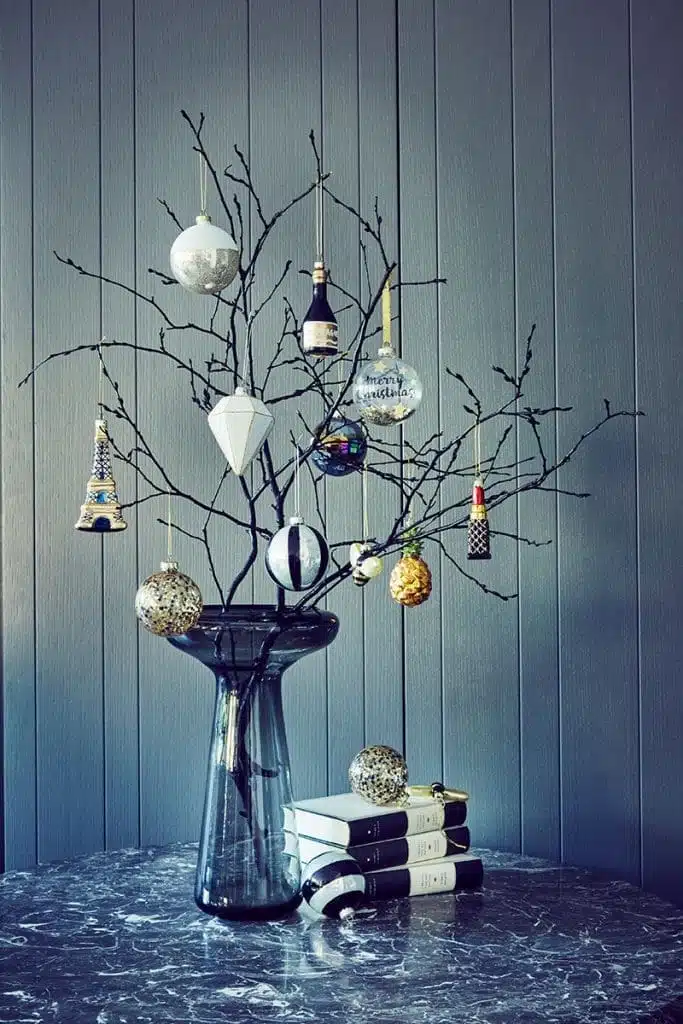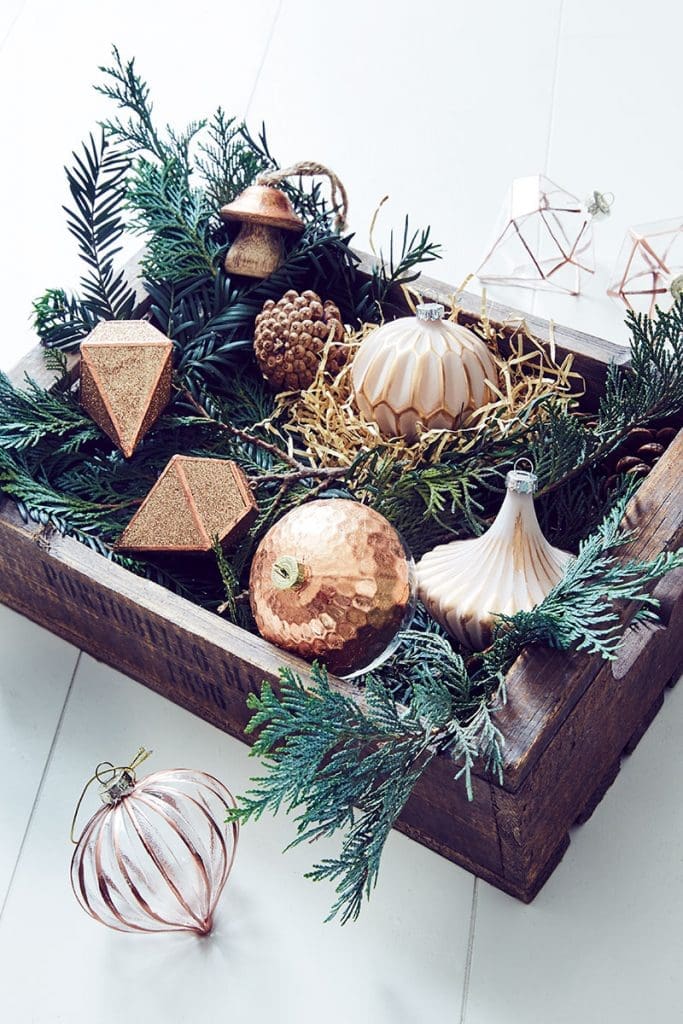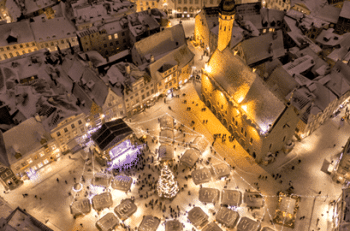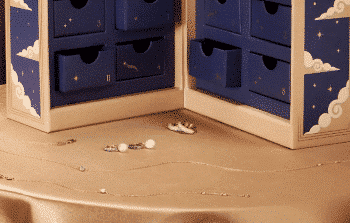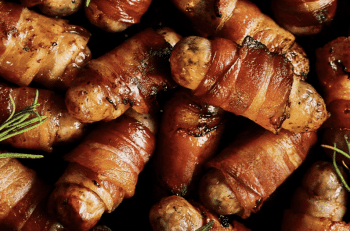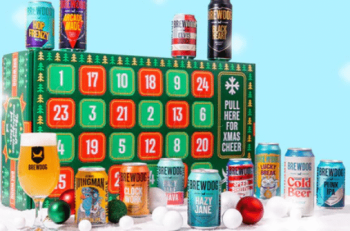Everything you need to know before buying your real or artificial tree
If there’s anything likely to spark a debate at Christmas it’s real versus artificial trees. The nation is divided into those who love the festive feeling a real tree brings while others crave the simplicity and variety of artificial types.
Whichever you prefer, we’ve spoken to the Christmas experts to find out how you can choose the perfect tree for your home and budget…

Real trees – the traditional choice
If you’re a traditionalist there’s nothing better than the smell of a real tree at Christmas. Around 6 million are sold in the UK every year.
But how do you know which one will still have its needles on the 25th December?
Choosing the right type
Selecting the right variety of tree is the first step. Each has its own distinctive look and will last for varying amounts of time so it’s worth a little research before you buy.
According to Craig Roman, head of visual merchandising at Dobbbies Garden Centres, there’s four main types on sale here in the UK:
The Nordman Fir: By far the most popular choice, due in part to its perfect shape, low-needle drop properties and the luxury feel to its glossy soft green needles. If you like to put your tree up early Nordman Fir would be a good choice for you.
The Fraser Fir: With its narrower width, the Fraser Fir is perfect for a smaller space. It has a blue green colour and dense glossy foliage, still with good needle retaining properties – making it ideal for tinsel, lights and a sprinkling of hanging decorations.
The Noble Fir: These are a little bit special and not available in huge numbers, but if you are looking for something a little more luxurious this might be just the ticket. Whorls of blue-tinged needles adorn these gorgeous chunky trees, with nicely spaced foliage, it provides the perfect place for all your baubles and decorations.
The Norway Spruce: Heralded as the traditional Christmas tree, it boasts a lovely pyramid shape, dark green foliage and has that classic rich, fresh festive scent. This is the tree we all remember from our childhood, and although the needles will not last as long as some other varieties, it is a good choice for those with cooler rooms, or tend to put their tree up later.
Finding the right size
Once you’ve chosen the type of tree you want think about the space available in your home. When it comes to height it’s a fairly simple calculation, but it is worth taking a tape measure to double check.
Craig says: “Make sure you know the height of the room you’re putting your tree in, the labels are just a rough guide. It’s also worth bearing in mind that tree stand that you plan to use, as this will add a little extra height to your tree.”
The width of the branches is also important to work out to avoid your tree taking over the living room. The tree type will give you a guide but Craig advises not buying a wrapped tree if possible.
“When a tree is in the netting you don’t know what you’re getting. It could be too wide for your room or too uneven in shape. All is not lost if you get the height wrong, though. Just trim the trunk and take off some lower branches.”
Making it last
If you want your tree to last first make sure it is very fresh when you buy it.
Matthew Bent, managing director of at Bents Garden Centre in Cheshire advises just a couple of quick checks. “When you’ve found your perfect specimen gently shake the tree to see if any needles fall off and run your fingers down the branches to check they are fresh and pliable. And check the colour. Healthy trees have a stronger colour and will last longer indoors.”
You should also look for trees grown by one of the UK’s many specialists to make sure they haven’t travelled too far.
Gary Purnell, garden life buyer at Homebase says: “All our trees are grown in the UK by specialist grower Needlefresh. They are delivered from field to store in as little as 48 hours to guarantee freshness and minimal needle drop.”
Once bought, the number one mistake many of us make is rushing home to decorate our real tree straight away. While that gets us in the Christmas spirit it could actually shorten the life of your Christmas tree.
The experts’ advice for a long lasting tree is to give it a trim it when you get it home.
David Mitchell, Christmas tree buyer at Wyevale Garden Centres, says: “Keep your Christmas tree fresher for longer by chopping or sawing a few centimetres off the bottom and soaking it in a bucket of water outside, either overnight or for as long as possible, before bringing it inside. Ideally, try to use LED tree lights which emit less heat and are better for the environment.”
While your tree is hydrating you might want to rearrange some furniture so it has the perfect spot. Find a place that’s out of direct sunlight, away from radiators and free from draughts.
You should also water your tree regularly to help prevent it drying out and losing needles. All of our experts agree that you should invest in a stand that will hold plenty of water – it will need around a litre every day – to make your tree look its best until the big day.
Artificial trees – the contemporary choice
If you prefer the simplicity of bringing the tree down from the loft each year then the great news is there’s endless choice. From classic, real-look trees complete with pine cones to modern numbers in all shades of the rainbow you can find one that suits your aesthetic. But what should you consider?
Spend or save
The biggest question when it comes to artificial trees is whether to spend or save. An artificial tree can cost as little as £50 or you can spend thousands. Matthew Bent suggests investing in the best tree you can afford if you’re looking for a real feel.
He says: “We consider a real look tree to be a long term investment so would suggest it better to spend to get a truly realistic specimen.”
Spending a little more should also guarantee better quality. While cheaper versions may look ok you may still find yourself hovering up artificial needles long after Christmas. If you want a tree that lasts year after year it’s worth shelling out a little more.
Choosing “the one”
You can expect your artificial tree to last at least 10 years which means you’ll want to find one that perfectly matches your style.
If you’re buying an artificial version for the first time you’ll be pleased to find that thanks to new technology Matthew adds you can now buy one that’s almost indistinguishable from the real thing.
“You’ll find the quality of artificial trees has improved hugely over recent years. Look out for those with ‘feel real’ branches which feature polyethylene tips that make trees both look and feel more realistic.”
Size is important so consider where in the house you’re most likely to put your tree and find one that fits the space. Louise Lee is Christmas buyer at Wyevale Garden Centres. She recommends jotting down the sizes before you head to the shops to avoid getting carried away.
“When choosing your tree, ensure you have measured the space where you want the tree to stand – artificial trees come in a range of sizes so having the measurements with you when you’re choosing will help.”
A tall tree looks best in most spaces, but as with real trees make sure to leave around a foot of space for the all important tree topper.
Artificial trees also make the perfect choice for smaller spaces or those with more contemporary design tastes.
Nina Findley, Christmas home buyer at Homebase says: “A good artificial tree is often hard to tell apart from the real thing. We have a wide range of realistic-looking artificial designs but we understand that not everyone is looking for a traditional tree. Pencil trees are the perfect way to save space in a smaller home while a half tree, with its raised branches, solves the problem of how to deal with inquisitive pets and curious children. However, if you’re looking for a design statement try a pre-lit or fibre optic style.”
Caring for your tree
While an artificial tree shouldn’t need pampering during Christmas you will need to factor in some time after the holiday to put it away for next year. Louise Lee’s top tips include giving it a quick clean before putting it away to make sure it continues to look great.
“Your tree will look fresh year after year if you remember to care for it properly. Artificial trees are more likely to accumulate dust from around the home so keep checking the branches and wipe away any dust or dirt you find, especially before storing away. To keep the lush green colour for longer place out of direct sunlight and store in a cool, dry place. Make sure you take care when storing away by keeping it in a store bag or box, and try not to bend the branches.”
The finishing touches
Of course, whichever type of tree you choose, the decorations are what will really make it sparkle. Craig at Dobbies advises pairing the decoration to the right branch starting with largest first.
“When you’re ready to dress the tree, start by selecting the biggest items from your assortment of decorations and display them on the larger branches, then repeat this winning technique by matching smaller decorations to the more petite branches. On my own trees, I always fix the decorations to the tree with wire, rather than string – this means I can completely control where they sit, rather than rely on where they ‘hang’.”


